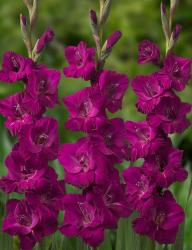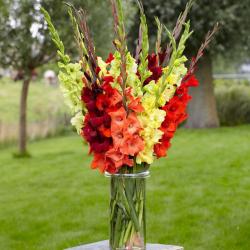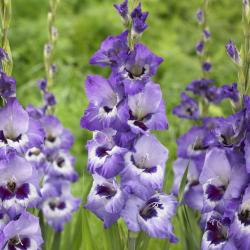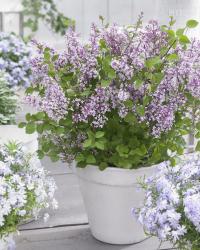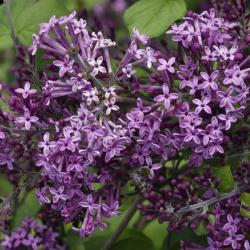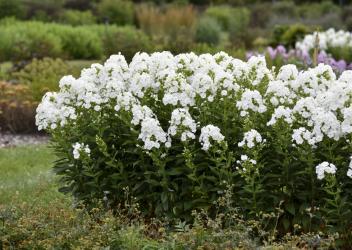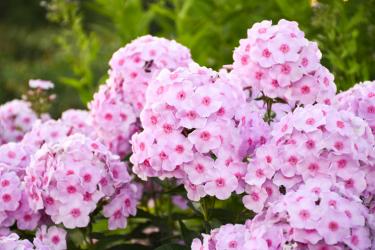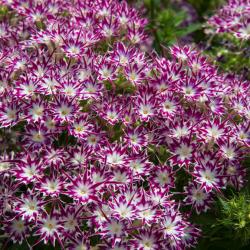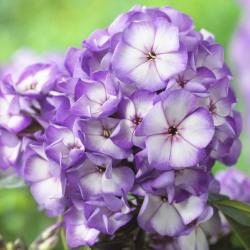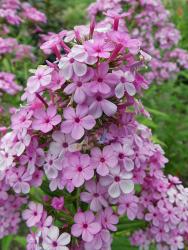Gladiolus: Gladiolus are summer blooming bulbs planted in spring. While they seem to be an American flower staple, most varieties are actually native to Africa and countries in the Mediterranean that have arid climates. Their long stems and gorgeous colorings make them a perfect addition to your garden and flower arrangements.
Tips
• Start planting the bulbs in mid-to-late May and continue every two weeks through early July to create a succession of blooms.
• Gladiolus are prone to leaning or toppling due to heavy rains or strong gusts of wind. Tie stems to bamboo canes to help keep them upright.
• Instead of planting fresh gladiolus each spring, you can also choose to overwinter the corms indoors. Dig them up in the fall and cut off the stems and leaves to about an inch. Dry them out for 2-3 weeks in a warm place with good airflow, then store in a cool, dry area at around 50 degrees.
Lilac Shrub: While the word “lilac” has come to mean a soft, light shade of purple, the plant itself comes in a variety of tints from dark to light! Identifiable by their conical clusters of small, four-lobed flowers, their shades can change from bud to bloom as the plant matures.
Tips
• Lilacs need more frequent watering for the first couple of years; the National Garden Bureau suggests at least 1 inch of water a week.
• If your lilac forms powdery mildew, don’t worry! It doesn’t harm the plant. Mix 2 tablespoons of baking soda into a gallon of water and add a drop or two of dish soap and spray on the leaves if the temperature outside is less than 80 degrees.
• Lilacs do not require annual pruning, but cutting off spent flower heads within a month after bloom helps the plant produce more the next year.
The Bloomerang® Dark Purple
Reblooming Lilac, also called syringa x, will rebloom several times during the spring season unlike other common
lilacs. The Bloomerang Lilac is a proven winner available in tree or shrub form with beautiful fragrant purple flowers. It is a medium-sized plant that grows in full sun to partial shade. Be sure to prune when flowers are finished, and you can expect more blooms later in the season. This lilac is best planted in a well-drained, loamy soil. Keep soil evenly moist and avoid spraying water on the foliage. Bloomerang lilacs are disease resistant and require yearly feeding only. David Sherwood, Sherwood’s Forest Nursery.
Phlox: The long-lasting and colorful nature of the Phlox makes it a North American favorite. It is a native, perennial wildflower found across the continent from Florida all the way to Alaska. Its blooms are known to last for several weeks, and it comes in a variety of vibrant colors.
Tips
• Make sure to divide the Phlox every 3 to 5 years to reinvigorate the plant and increase its performance.
• Overwatering without letting the soil dry out can lead to powdery mildew.
• They love the sun! Keep them in a sunny location for more blooms.
Jeana Phlox brings months of beautiful color and great disease resistance. Its many sweetly fragrant flower heads are made up of hundreds of petals in lovely shades of rosy-pink. If you love Phlox but have steered away from them due to their finicky behavior, this plant is for you. It works beautifully in cottage gardens, mass plantings and containers. Its exceptional flowers are outstandingly cut and delightfully fragrant. It’s also a favorite of Swallowtail butterflies, Skippers, Sphinx months, Hummingbirds moths, hummingbird and other butterflies. Plant in full sun to light shade in soil that has been amended with organic matter. Keep the plant well watered, especially when the plant is blooming and setting up buds. For best results, apply an all-purpose fertilizer following the manufacturer's instructions. Ann Lapides, Sugar Creek Gardens.


